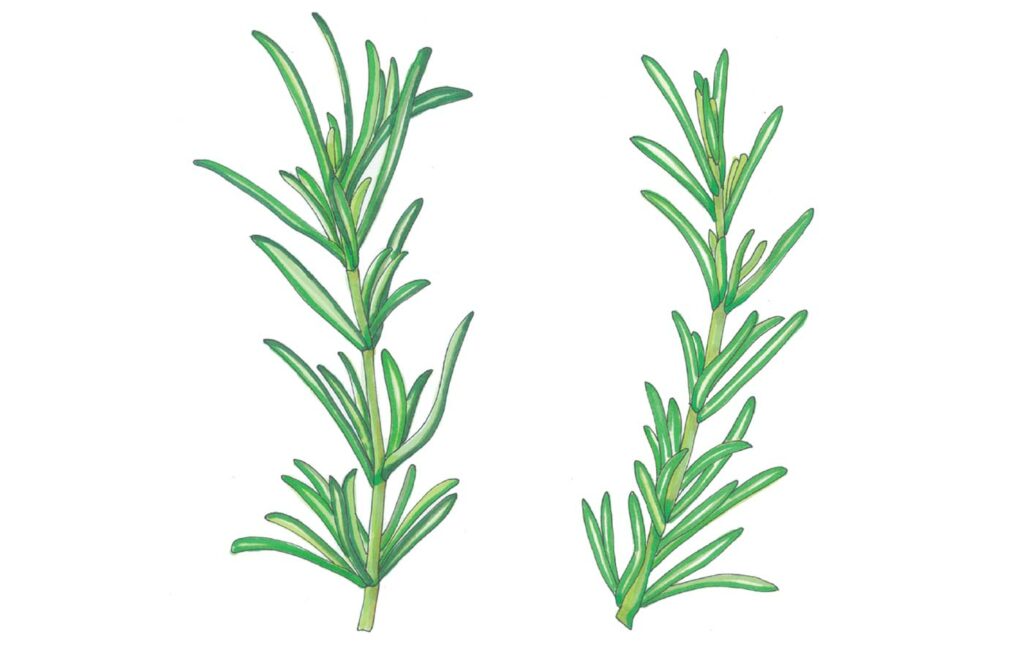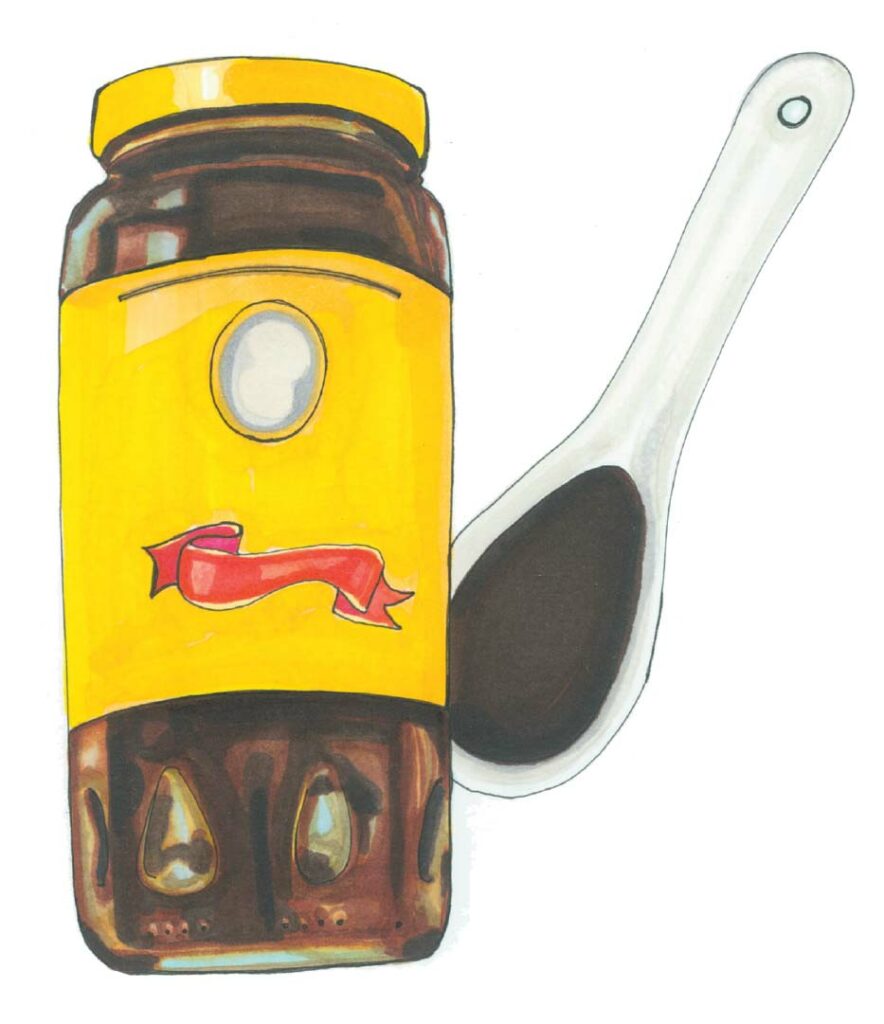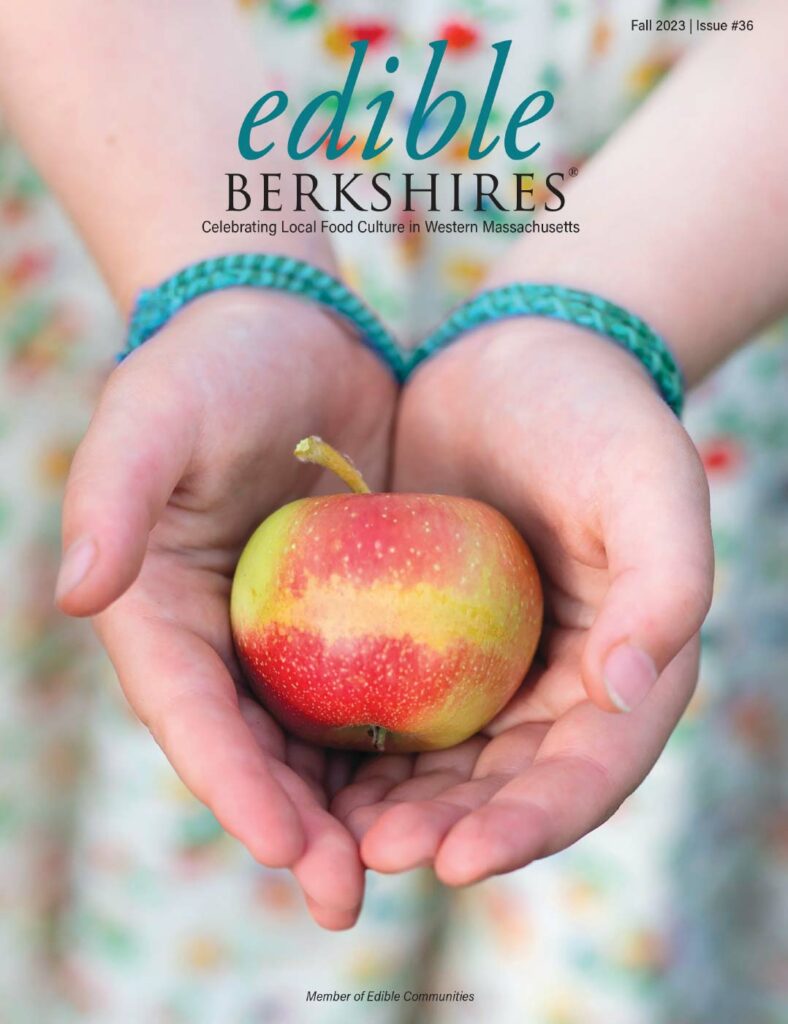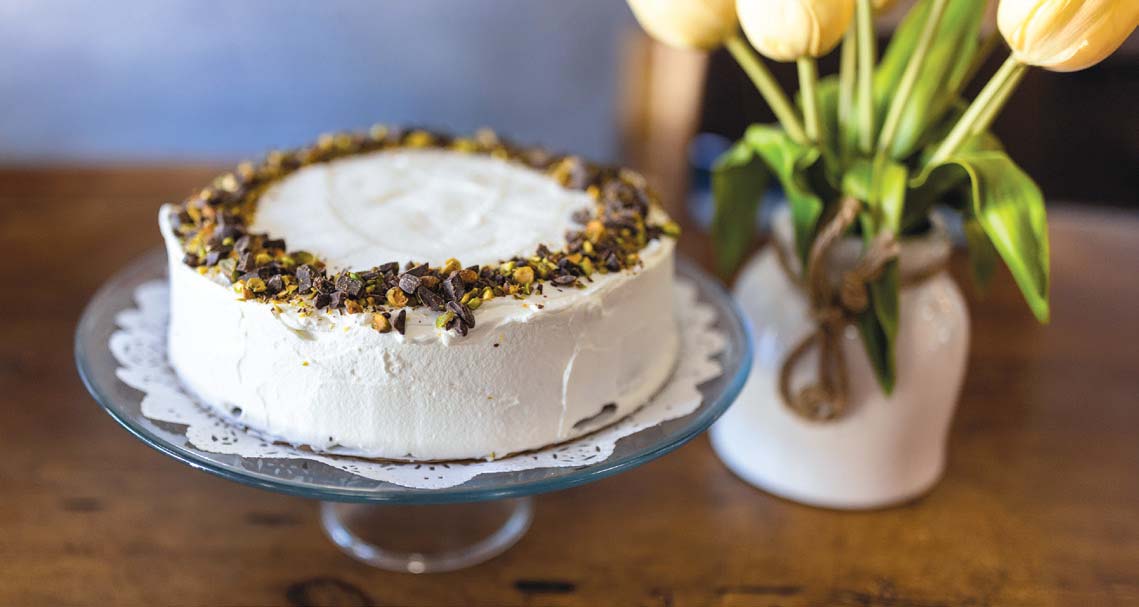
A Winter Wellness Routine
BY LEAH HOLZEL | ILLUSTRATIONS BY ABBY LANOUE
Wood smoke, pine needles, a loaf of gingerbread baking, the smell of the house when the furnace kicks in. Just when nature’s sounds are more muted and the visual landscape is frozen in grayscale, smell gives us our most vivid experience of winter’s rich ambience. The more we learn about the sense of smell, the more we know how it modulates our moods, affects our awareness and cognition, and reunites our most long-stored memories with invisible airborne volatile molecules our brains clearly recognize. At all times, our sense of smell is a constant background to our experience—scanning our world, feeding us chemical communication from which we make meaning, bringing an emotional tone to life. What’s more, this “super sense” can be strengthened by activity and attention. So, let’s use this season to actively exercise our sense of smell— elevating mood, flavor appreciation, and even cognitive function in the process—by taking up a smell-training practice from winter solstice to spring equinox.
The smell-training technique is perfectly suited to this season, when we naturally turn inward: It consists of repeated, focused sniffing of a few aromas while contemplating your interior landscape of associations. While your brain is aroused by the mere act of sniffing, anticipating and projecting meaning onto the scent you’re about to smell actually prepares your brain to perceive it. Many of my insights come from a three-year smell loss experience, which began in 2016, and developing my practice as self-treatment to help me recover. As a food writer with a culinary career, I’d assumed it was a double tragedy—to have lost a sense and be a culinary artist who could no longer perceive flavor. Then I learned olfactory (smell) receptor neurons are uniquely designed to regenerate, and research shows that smell training can hasten that regeneration and reinforce neural pathways. Equipped with all the food-focused experiences I’d cultivated over my life and driven to preserve my companionship with food, the very thing that originally seemed tragic, I came to see as to my advantage. I was in a unique position to forge a way of keeping those neural connections alive. Training with even a small group of scents can increase olfactory function overall. And unlike most information that enters your brain relayed through the gatekeeper thalamus, smell signals sidestep that station and hit the limbic system directly, unfiltered—rendering the perception of smell powerfully linked to emotions and memory.

Further, you’re exercising your sense of smell every time you eat, because those airborne volatile odor molecules don’t just get to your receptors through the “front door” of your nostrils. They spring from food itself when you chew, swallow, and exhale, pulsing up “retronasally” via the airway at the back of your throat. This is a whole separate second means of smelling—the one that brings full perceptual life to what you’re eating and drinking. What we perceive as flavor is 80% informed by that smell-molecule saturated air, only we’re so distracted by feelings—the sense of touch in our mouth, and the taste receptors located literally on our tongue that are busy capturing the sensations of sweet, sour, salty, bitter, and umami—that we associate flavor with the action taking place inside our mouth. Meanwhile, the airborne molecules actually responsible have long since flown up to, and been processed by, our olfactory brain.
A 2022 article published in the journal Neuroscience and Biobehavioral Reviews covers 13 years of research since the smell-training method was first introduced by Professor Thomas Hummel of the Smell and Taste Clinic, University of Dresden, as a treatment for smell loss. The paper documents research behind the many potential applications for smell training well beyond this patient population, concluding that smell training “can now be considered an established method of rehabilitation, in the developmental and aging process engaging cognitive functions.” Another systematic review, published in Neuropsychology Review in 2023, examines 18 studies relating to smell training’s ability to support brain function and cognition. According to the review, the studies “provided emerging evidence that OT (olfactory training) is associated with improved global cognition.”
So, now it’s time to bring a companion recipe packed with aromatics into the picture, as you frame your first go at smell training! Whether your aim is to keep your smell fit, preserve it longer as you age, or rehabilitate your sense in the wake of post-viral smell loss, such as from Covid-19, remember the most powerful asset you have: your own rich interior world of prior experiences and memories to draw from and your remarkable ability to play out vivid scenarios in your head. In other words, every one of us has a personalized, customized toolbox to reach into, right here in your mind.

TO GET STARTED, YOU’LL NEED:
- 4 small (1- or 2-ounce) glass jars with lids, clean and odor free
- Ginger, rosemary, cloves, and molasses for the jars—a tablespoon or so beyond the amounts you’ll reserve for the recipe (Feel free to swap in the cinnamon and/or allspice, but chipotle powder isn’t appropriate as its volatile capsaicin can irritate your airways.)
- Labels or adhesive tape and a permanent marker to label the side of each jar, along with its corresponding lid (Smell training isn’t about blind identification. You’re meant to consciously anticipate which odor you’re about to smell.)
TO PRACTICE:
- Seat yourself in a quiet, private place where you’re undistracted.
- Open the first jar and bring it to your nose, thinking of what it is you’re about to smell.
- Gently sniff the contents for about 20 seconds, concentrating on what you’re smelling. (You’re not attempting to breathe air deeply into your lungs.)
- Replace the lid, and give your nose a momentary rest while you reflect on what you noticed. Repeat the process with the remaining jars.
- Do this twice a day. Try the morning and the evening, elaborating on the associations you visualize with each scent.
- Take note—even better, keep a journal—of your level of sensitivity to each scent. In olfactory science, that’s called your “odor threshold.” Even your subjective assessment enriches the overall benefits of paying close attention. Exercise your “odor discrimination” by expanding your smell-training kit to include several scents of one category, such as training with a variety of citrus scents side-by-side. Or step that discernment challenge up a level by training with the grated zest of three different types of winter oranges.

SMELL TRAINING ENTRY POINTS
Cloves: If there ever were a spice to grab straight from the cupboard and train with, it’s cloves. These dried flower buds are among the most potent aromatic spices that exist—20% aroma chemicals by weight, and almost all of it in their defining molecule “eugenol.” Train with them ground or compose a jar of whole cloves, and wake them up with a ritual rattle before unscrewing a lid.
Molasses: It’s second nature to grab a whiff of aromatic spices and herbs, but don’t overlook all the layers going on in this cookie. Humble molasses is the humming base note, ever-present in the background—rich, sulfurous and smoky, a hint of vanilla and concentrated prune. You can even smell some pleasant sharpness from volatile acids.
Rosemary: This scrappy plant survives in the wild by defending itself and its territory with its potent volatile compounds. And hooray for you that rosemary is not subtle whatsoever. Its fragrance is penetrating and persistent! Activate those compounds by bruising and chopping rosemary’s fresh pine-needle-like leaves. Fresh rosemary has the capacity for a more piercing scent than rosemary essential oil or the same herb, dried.
Ginger: The aromatic range of this rhizome offers a variety of distinctive focal points for your smell-training practice, from lemony fresh to woody to floral to eucalyptus. A rasp grater quickly turns a knob of ginger into a heaping teaspoon of freshly grated, highly aromatic spice for your smelltraining jar. The molecules responsible for ginger’s pungency aren’t volatile, so focused sniffing won’t irritate your nasal passages or eyes. Renew ginger every couple of days by washing out your jar with unscented soap.








